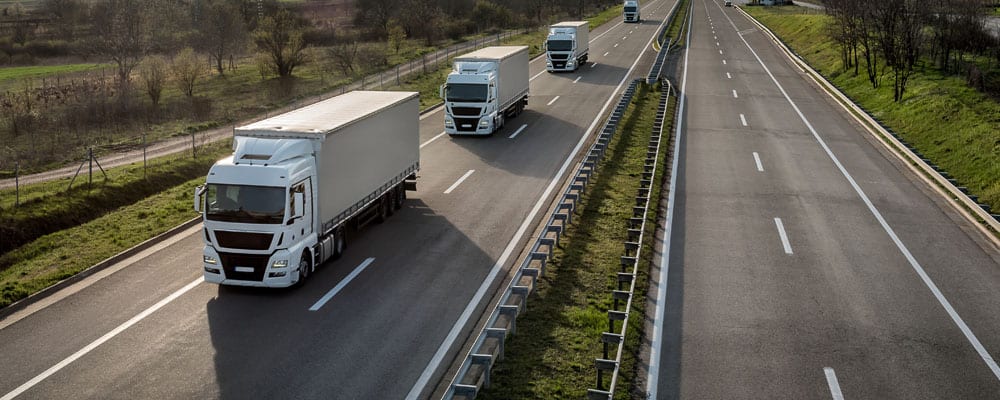
New Ways to Accurately Measure Truck Traffic Data

Freight-loaded trucks create the most wear and tear on highways and local roads, but what’s the best way to accurately measure truck traffic? Vehicle miles traveled (VMT) is a helpful indicator, but not all regions have the ability to quickly and affordably separate heavy trucks from personal vehicle traffic counts.
That’s where Big Data comes in. Today’s truck-focused data sets using GPS can pinpoint truck metrics including trip origin, destination, route, duration, and stops along the way. Traditional truck measurement methods simply can’t keep up.
Challenges for Truck Traffic Counts
Trucks have long been a priority for transportation analysts to measure. In fact, today many Departments of Transportation (DOTs) have permanent highway sensors in place that can separate heavy truck counts from cars, light freight, motorcycles, and other vehicles.
Unfortunately, these sensors can only capture volume in pre-set time increments, which means the raw volume number doesn’t account for traffic entering and exiting via highway ramps. Additional detail like trip origin, destination, duration, and route can inform infrastructure investments at, for example, rest stops.
To capture more detailed truck metrics, agencies have traditionally relied on driver surveys. But surveys can return unreliably small sample sizes when drivers fail to complete them. Even the surveys that are completed risk a margin of error on accurate driver recall.
These traditional methods can be expensive to mount, slow to complete, and, once finished, only one-time sources of data. In other words, analysts can’t easily go back and ask new questions to dig deeper into report findings.
How Big Data Tames Truck Traffic Metrics
Big Data is changing the face of truck traffic measurements. At StreetLight Data, for example, we can track percentages of truck trips from a specified zone, or between a specified origin and destination pair. We can also track truck “tours,” or trips that pass through several specified zones.
What this means for transportation experts is that truck movements can be analyzed for more accurate guidance on infrastructure requirements. For example, we have been able to support DOTs in accomplishing these key goals:
- Identify key corridors for freight traffic mitigation
- Guide effective infrastructure investments
- Pinpoint freight movements around distribution centers
- Validate existing infrastructure projects
- Scope potential truck stop locations
- Revisit the data for quick follow-up analyses
Reliable data is critical, and a larger sample size creates more accuracy. Our commercial vehicle GPS sources provide us with 12% of heavy and medium-truck activity, giving our data set a robust sample size. Our counts have been validated by several DOT permanent sensor counts.
If truck travel is a priority metric for your agency, join the Big Data revolution. Click below to read one of our case studies about working closely with DOT officials to secure fast and accurate analyses to better inform their transportation mission.